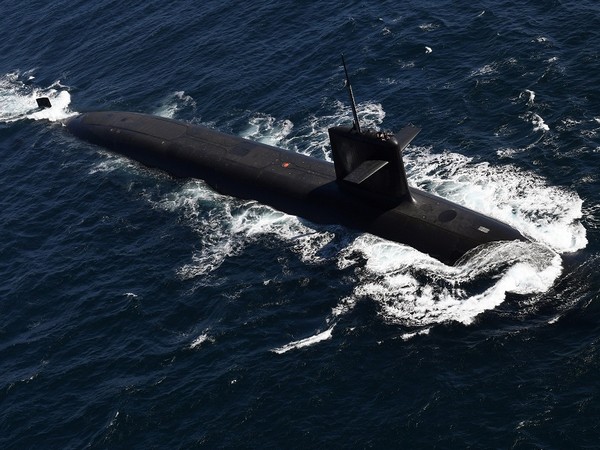China's Secret Submarine Sinking: Zhou-Class Vessel Disappears
A nuclear-powered Chinese submarine, Zhou-class, sank pierside, with the Chinese navy attempting to conceal the incident, according to CNN. Satellite imagery and US defence officials confirmed the disappearance. The event underscores China's ongoing efforts to modernize its navy despite weaknesses in accountability and oversight.

- Country:
- United States
China's latest nuclear-powered submarine sank while docked in the spring, with Chinese naval forces attempting to hide the incident, CNN reported, citing two US defence officials. The first in its new Zhou-class series, the submarine was under construction near Wuhan and is designed with a unique X-shaped stern for enhanced underwater maneuverability.
A satellite image captured on March 10 by Maxar Technologies shows the Zhou-class submarine, with its distinct X-shaped tail, docked at the port. Additional imagery from June reviewed by Maxar indicated that the submarine did not return to the pier. A senior US defence official commented, "It's not surprising that the PLA Navy would try to conceal the fact that their new first-in-class nuclear-powered attack submarine sank pierside."
Tom Shugart, an adjunct senior fellow at the Center for a New American Security and a routine observer of Chinese shipyards through satellite imagery, was the first to detect unusual activity at the site. Shugart noted, "I've never seen a bunch of cranes clustered around one spot. Historical imagery shows usually one crane, but not several clustered together. It's unusual."
Furthermore, Shugart observed from older satellite images that the submarine was larger and had a distinctive tail, fitting the new class of submarine. "Typically, these submarines stay at the shipyard for several months post-launch for outfitting. This one disappeared," he remarked.
China's modernization of the People's Liberation Army (PLA) Navy, including its submarine fleet, remains a priority as it strives to build a militarily world-class entity comparable to the US. The latest China military report details that the PLA Navy has six nuclear-powered ballistic missile submarines, six nuclear-powered attack submarines, and 48 diesel-powered attack submarines. In contrast, the US Navy operates 14 ballistic missile submarines, four guided-missile submarines, and 53 fast attack submarines—all nuclear-powered.
The Wall Street Journal originally disclosed the submarine sinking. Uncertainty remains about whether the vessel had nuclear fuel onboard at the time. A Chinese Embassy spokesperson in Washington, DC, stated, "We are not familiar with the situation and currently have no information to provide," according to CNN.
Despite the setback, China continues to boost its submarine production capabilities. A Congressional Research Service (CRS) report predicts that even as older submarines retire, China will maintain a fleet of 65 submarines by 2025 and 80 by 2035. China, currently having the largest navy by number of ships, boasts 370 platforms, including 234 warships, compared to the 219 warships of the US Navy.
However, the defence official pointed out that the submarine incident raises serious questions about the PLA's internal accountability and oversight, areas troubled by corruption within China's defence industry. (ANI)
(With inputs from agencies.)










